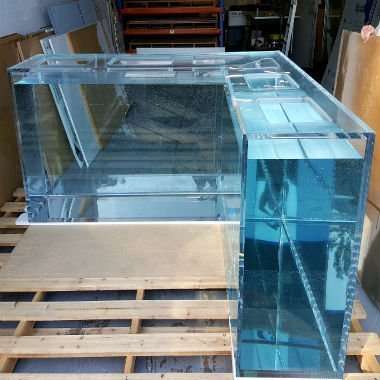Why even choose to produce plastic materials? Firstly, plastic fabrication commonly has the benefit of having relatively fast finish times, and in contrast to the majority of materials there’s also the option of colouring plastic before production, as opposed to after. It’s significant malleability means that it possesses a comparatively low melting temperature, and it is far more light-weight compared to numerous other resources – both these aspects simplify the manufacturing operation. Furthermore, plastics are relatively inert and thus have high chemical resistance. Regardless of all of these positives, plastic material is however not suitable for applications which need a very high structural integrity, and is rather prone to wear and tear in the long-term.
Overview Of CNC Machining
CNC machining is a computer operated subtractive procedure, which removes material from plastic in an effort to generate the desired shape. The computer is high-tech, with the ability to convert a design into numbers using a computer assisted design software system. The numbers are able to operate the machine to cut the desired shape. To operate, the pieces of equipment require an intermediate stage in the creation and validation of tool paths. As soon as the machine is provided with the tool paths, the subtractive process is started. When the assemblage is finished, the component part is cleaned, smoothed, and cut.
For lower quantity plastic component part applications that require tight tolerances and forms that are challenging to mould, machining is appropriate. CNC machining boasts minimal to moderate initial expenses, and can produce high quality plastic pieces with short finishing times. Yet, with increased product complexity, the charge per part boosts. In addition, this process needs tool access considerations, and certain shapes, for example those with spherical inner channels, are near-impossible to make using CNC manufacturing. There are actually 1,000’s of sites with information relating to ‘poster snap frames’ nevertheless this is among the finest websites www.display-warehouse.co.uk
Introduction To Vacuum Formation
Vacuum formation is a method during which plastic material is warmed and moulded, generally using a mould. The enormity and sophistication of vacuum-forming machines range between affordable desktop equipment to sophisticated manufacturing machinery.
It can be well suited for any venture, from made to order designs to large-scale production, taking into consideration the large choice of machinery offered and that automatization is undoubtedly an option when necessary. Nonetheless, there’s minimum freedom in the different kinds of shape it can develop, and is also unfortunately only able to produce components with simple geometries. Compared to various other techniques, tooling prices are minimal, since vacuum formation only needs minimal forces and pressures. Generally, for modest production sizes the moulds are constructed of Three-dimensional printed resin, or even plaster, and for greater production sizes more robust equipment made from metal is commonly used.
The production method commences with a sheet of plastic material being clamped and heated up so that the plastic becomes mouldable. The plastic will then be put into the mould and cooled down, and frequently fans and also other chilling strategies are utilised in an effort to accelerate the chilling process. The ultimate stage involves any excess plastic being removed.

